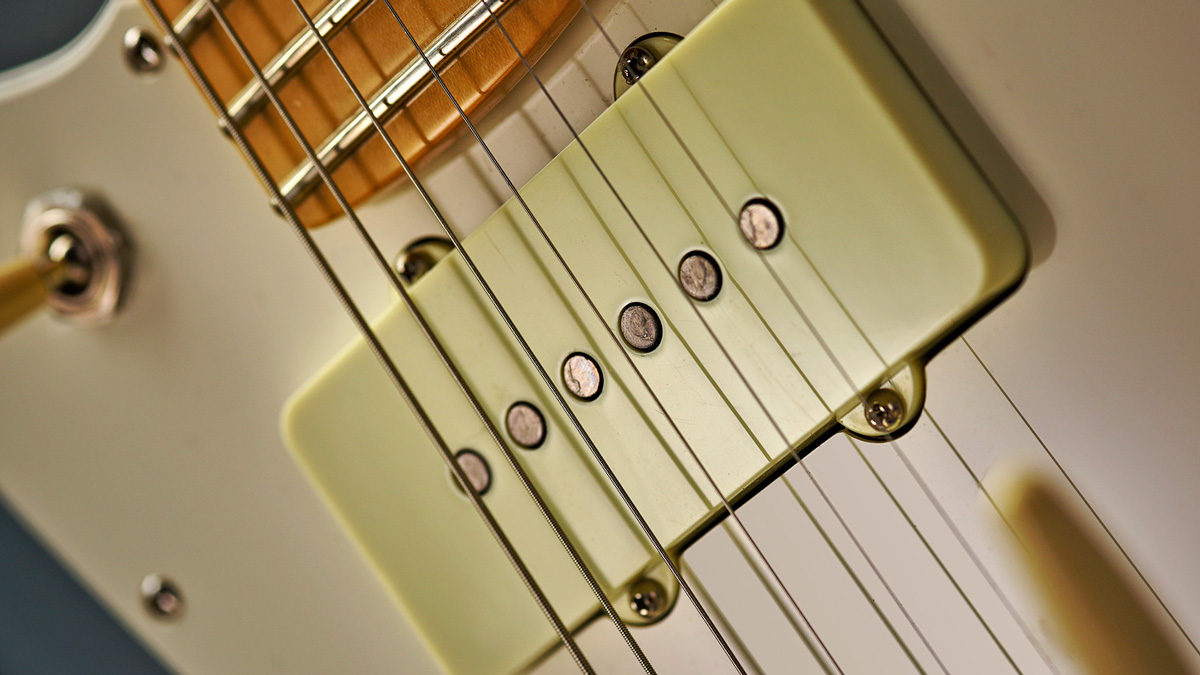MusicRadar Verdict
It might be time to change your opinion on these less feted Fender designs.
Pros
- +
Upgrades from American Standard; bridge/pickups; simplified electronics; enhanced sounds.
Cons
- -
Not for vintage-obsessed offset fans, either in function or sound.
MusicRadar's got your back
So many of us think Fender got it so right with the Stratocaster and Telecaster and that the later Jazzmaster squarely missed the point.
59 years later, the Jazzmaster’s dual control circuit, for example, still leaves many of us baffled.
In truth, both the Jazzmaster has been garnering its own fans and players for many, many years becoming the almost default axe for anyone remotely ‘indie’: the anti-Fender for the anti-guitar hero. This continued rise in this offset’s fortunes is clearly evidenced by its elevation into the 2017 Fender American Professional range - previously the American Standard range.
The Jazzmaster comes in new colours: Sonic Gray, with a parchment scratchplate, and Mystic Seafoam, with a mint green scratchplate, but only with a maple fingerboard. The two classic colours - 3-Colour Sunburst (with mint green ’plate) and Olympic White (with black ’plate) - both come with rosewood ’boards.
Then we have other Professional upgrades such as new pickups, modern ‘Deep C’-shaped neck profiles, bone nuts, narrow-tall fret wire... there’s a treble bleed capacitor and resistor circuit on the volume controls, not to mention the neat lightweight moulded hardshell case that’s included. Price-wise, they top the range, along with the dual humbucking Deluxe Telecaster model.

In the flesh, this modern-spec piece feels immediately ready to go, especially the vibrato with the new screw-in arms that stay put where you want them, and the Mustang-style solid brass saddles that aren’t individually height adjustable, but, via different radii, achieve an arch that matches the modern 241mm (9.5-inch) fingerboard radius. The modern neck design has the 22nd fret on an overhang, truss rod adjustment is behind the nut, plus there’s the easy-to-adjust micro-tilt feature that makes neck shims a thing of the past.
The Jazzmaster completely ditches its original dual rhythm/lead circuit feature going for a three-way toggle pickup selector on the upper, not lower, tip of the scratchplate with master volume and tone controls above the output jack, as normal. As ever, all the controls are placed on the scratchplate, while the two classic large rectangular single coils mount directly to the body via the four screws that also allow height and tilt adjustment.
Want all the hottest music and gear news, reviews, deals, features and more, direct to your inbox? Sign up here.
Sounds
This is not the lightest we’ve ever played. The neck back is satin, while the Jazzmaster’s maple fingerboard face is gloss, and as we reported before, this is a really good rounded handful that gets bigger as you move up, but not excessively so. This is a mainstream guitar and we prefer this profile to the previous American Standards.
The Jazzmaster restores that singing, zingy sustain you’d expect. The bridge/vibrato setup adds to the sustain character and there’s a slight honkiness in certain places on the ’boards on both that you don’t hear on the more direct-sounding Strat or Tele.

That acoustic character certainly translates plugged in. The Jazzmaster is beautifully new-string bright - the least ‘jazz’ guitar you’ll ever hear! - and a good foil to either of our reference Strats and Teles, which, to our ears, have a more identifiable sound. The Jazzmaster is Fender for sure but less direct and ‘choppy’ than our reference Strats, without the ‘honk’ of the Tele’s bridge and with a slightly bigger, wider neck voice.
Think two-pickup Strat with a bit extra and you’re pretty much there, although with the mix, there’s almost too much high-end sizzle - we can’t help thinking a tone control for each pickup would work. The tone circuit actually works well on the lone pickups, though, really taming those highs for what many would consider a more classic, woodier, darker Jazzmaster voice.
Clean or with a little hair, amp tremolo and reverb, you’re in twang heaven. The strapped-on feel is actually very comfortable, too, and here’s a wonderful rhythm guitar with bounce and funk.
With apologies to die-hard Jazzmaster fans, we suspect many of us will be coming to these from their Strats and Teles: a third or indeed fourth Fender voice. Unlike the original incarnation, this Jazzmaster a more straightforward drive and play, and feel to a great extent like a modern piece.
Yet it retains a ‘retro’ vibe, not least with that long, high vibrato arm with its subtle waggle - it’s very different from the almost touch-sensitive Strat vibrato.
Dave Burrluck is one of the world’s most experienced guitar journalists, who started writing back in the '80s for International Musician and Recording World, co-founded The Guitar Magazine and has been the Gear Reviews Editor of Guitarist magazine for the past two decades. Along the way, Dave has been the sole author of The PRS Guitar Book and The Player's Guide to Guitar Maintenance as well as contributing to numerous other books on the electric guitar. Dave is an active gigging and recording musician and still finds time to make, repair and mod guitars, not least for Guitarist’s The Mod Squad.

